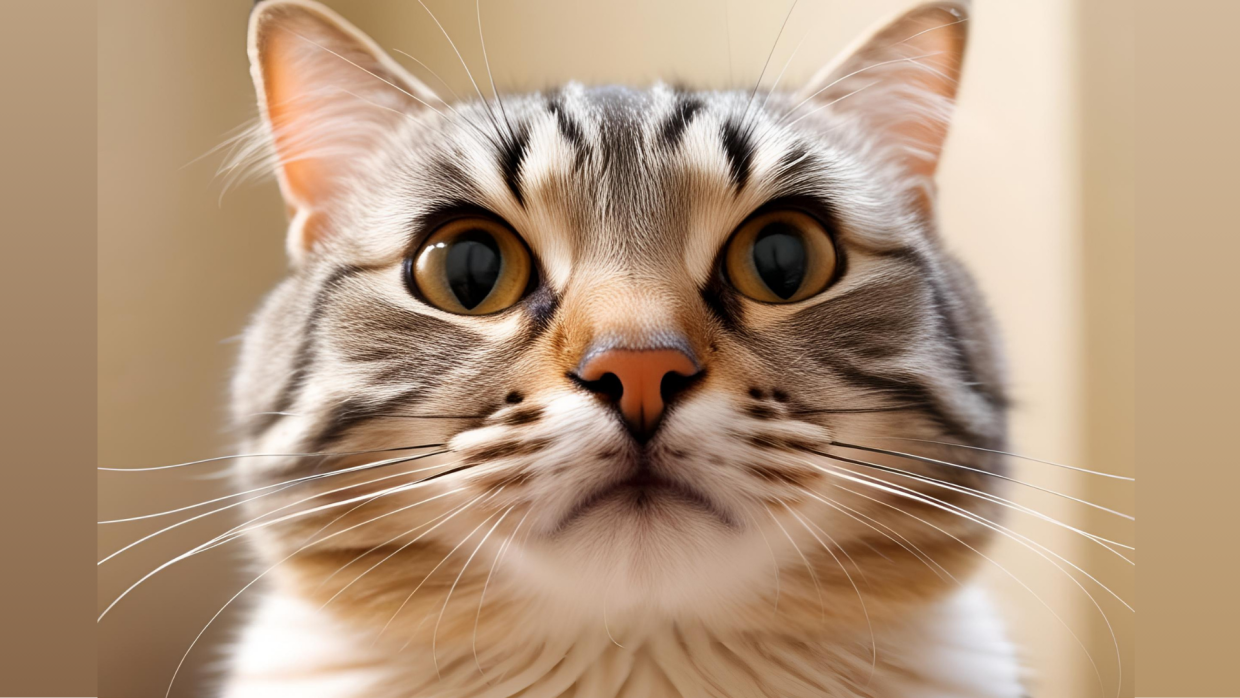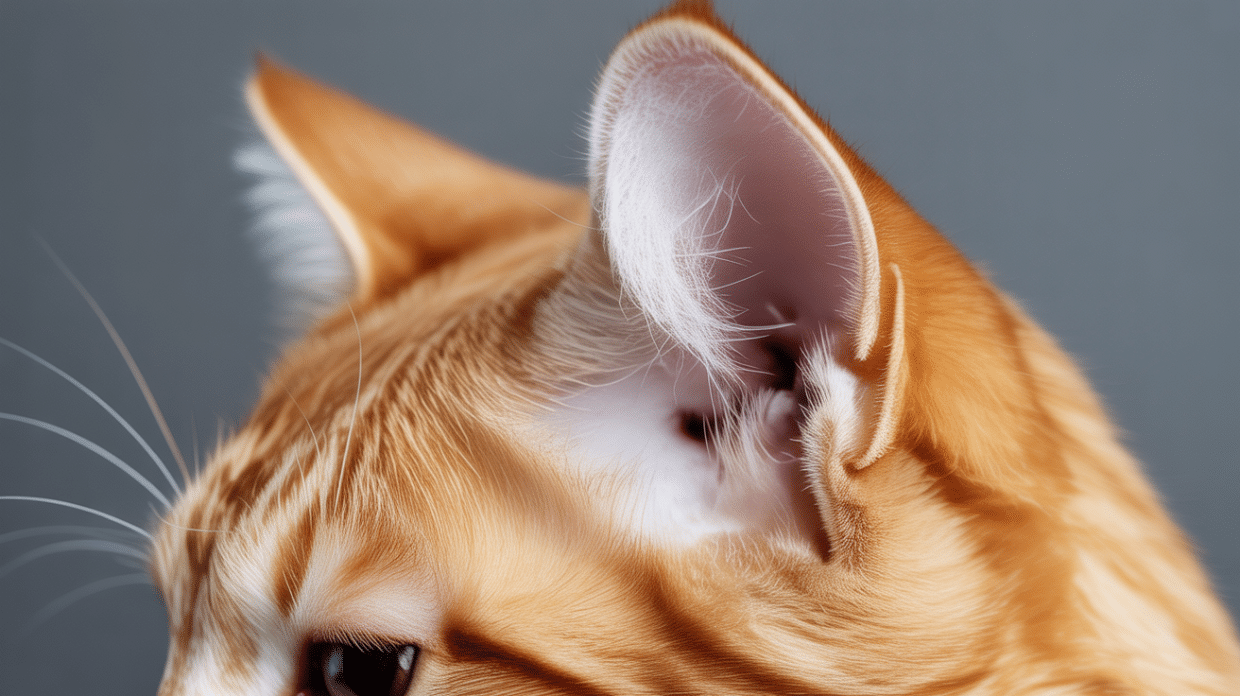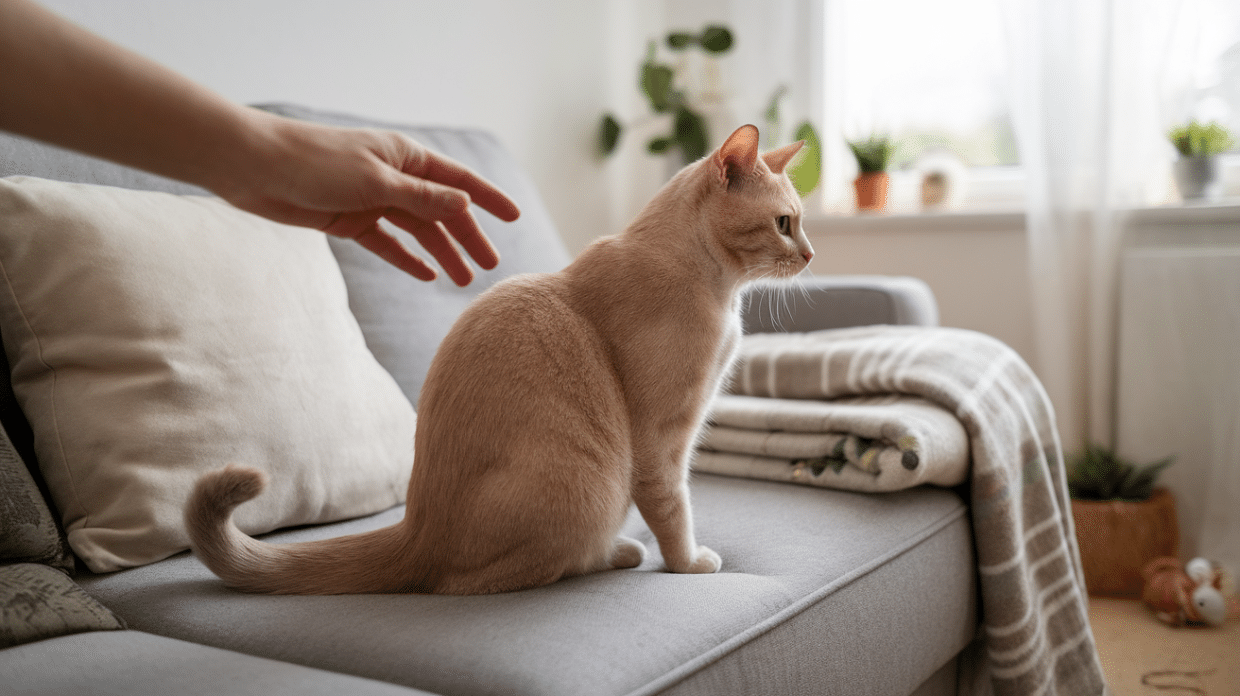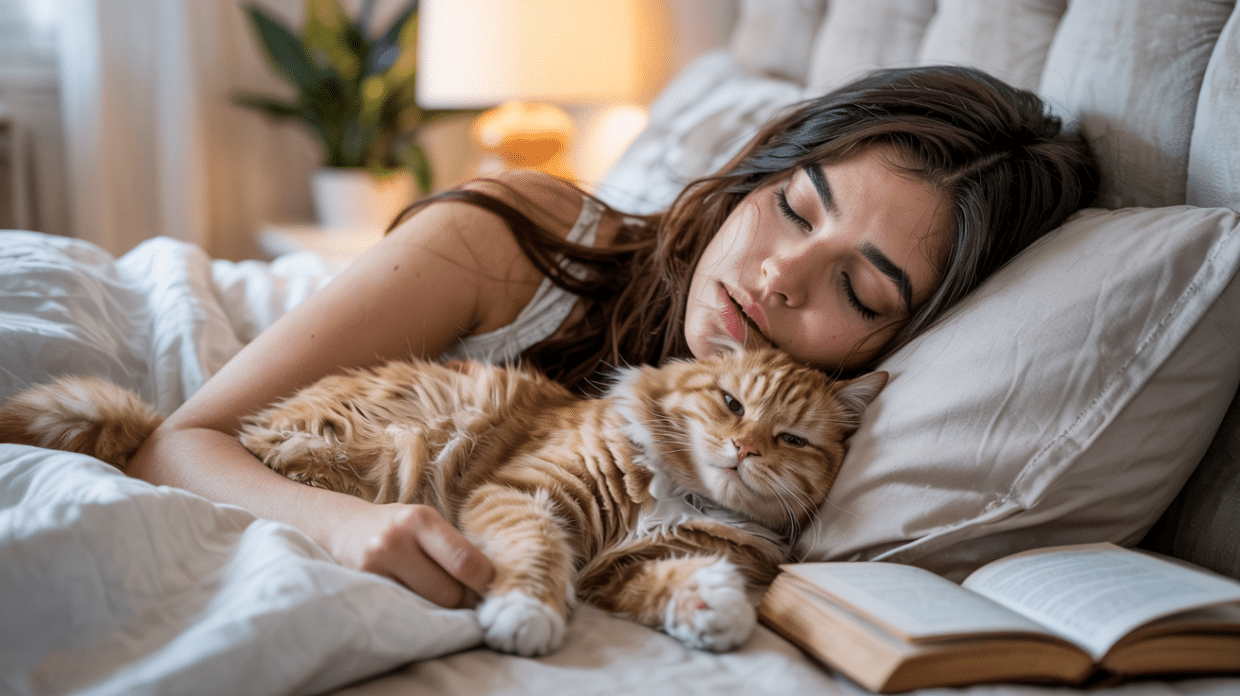Have you ever wondered if cats have eyebrows like humans? They don’t, but they have whiskers above their eyes that serve a similar purpose.
These whiskers help cats protect their eyes, sense their surroundings, and communicate how they feel.
In this blog, we’ll explain how these whiskers work, why they’re so important, and how you can keep them healthy. You’ll also learn why cutting whiskers can harm your cat.
Stick around to learn more about these fascinating features and how they play a big role in your cat’s everyday life.
Do Cats Have Eyebrows?
No, cats do not have eyebrows like humans. Instead, they have supraorbital whiskers located above their eyes.
These long, stiff whiskers are deeply embedded in the skin and connected to sensitive nerve endings.
They play a vital role in protecting the eyes, detecting movement, and navigating tight spaces.
Unlike regular fur, whiskers are highly responsive, helping cats sense objects, air currents, and vibrations, especially in low-light or tight spaces.
Though some cats may appear to have eyebrows due to fur markings, these markings do not function the same way as human eyebrows.
Why Cats Don’t Need Eyebrows Like Humans

While human eyebrows protect the eyes from debris and help with facial expressions, cats have whiskers to perform more advanced tasks.
These whiskers, unlike eyebrows, are sensory tools. They help cats detect movement, judge spaces, and react to threats.
Whiskers are also key to their balance, aiding them in precise movements, especially when they need to move quickly or in unfamiliar environments.
Do Some Cats Appear to Have Eyebrows?
Some cats have fur patterns or markings that can create the illusion of eyebrows.
For example, tabby cats often have an “M” shaped marking above their eyes, which looks like eyebrows.
Breeds like Siamese, Maine Coon, and Persians may have contrasting fur above their eyes, making them appear as though they have expressive brows.
However, these markings don’t function like human eyebrows. Instead, they add to each breed’s unique appearance.
How Whiskers Help Cats: Nature’s Sensory Marvels
Whiskers play a vital role in a cat’s daily activities, contributing to their ability to navigate the world around them.
These highly sensitive whiskers, including the supraorbital whiskers above their eyes, serve multiple functions that support their survival and comfort.
Protection for the Eyes
Whiskers above the eyes, known as supraorbital whiskers, help protect a cat’s eyes by sensing objects that might come too close to their face. This prevents potential injury or irritation.
If an object or speck of dust gets too near, these whiskers send a signal to the cat’s brain, prompting it to blink or move away. This reflex helps cats avoid injury, especially when they’re in motion or exploring narrow spaces.
The whiskers’ sensitivity enables cats to stay alert to potential threats without having to focus solely on vision.
Sensory Function
A cat’s whiskers are extremely sensitive, making them an important tool for sensing their environment.
These whiskers can detect the smallest of air currents, allowing cats to “feel” their way around, even in the dark.
This heightened sensitivity allows cats to avoid obstacles, judge the size of openings, and navigate tight spaces. In the wild, this ability helps cats catch prey and avoid danger.
Whiskers can also help cats determine whether they can fit through narrow spaces, adding to their survival instincts.
Communication
Whiskers aren’t just for protection and navigation. They are also an important means of communication. The position of a cat’s whiskers can indicate its mood and emotional state.
For example, when a cat is curious or excited, its whiskers will move forward and may be slightly raised. If a cat is feeling threatened or defensive, its whiskers will flatten against its face.
When a cat is calm and relaxed, its whiskers are in a neutral, comfortable position. This helps other animals or humans understand the cat’s emotional state, improving interactions and understanding.
Caring for a Cat’s Whiskers: Sensitive Sensory Support
Caring for a cat’s whiskers is an essential part of maintaining their overall health. Since whiskers are so important to a cat, it’s crucial to ensure they are well-maintained.
Never Trim or Cut Whiskers
Whiskers are deeply embedded in a cat’s skin and connect to sensitive nerve endings. Cutting or trimming a cat’s whiskers can lead to disorientation, stress, and difficulty in steering its environment.
Whiskers are integral to their ability to judge distances, sense changes in their surroundings, and maintain balance. Never trim or cut your cat’s whiskers, as doing so can cause significant discomfort and confusion for your pet.
Provide a Whisker-Friendly Environment
Some environmental factors can lead to whisker fatigue, especially when a cat’s whiskers frequently come into contact with objects.
For example, narrow food bowls can cause whisker fatigue, which occurs when the whiskers repeatedly touch the edges of the bowl, leading to discomfort.
To avoid this, use wide, shallow dishes for your cat’s food and water. This gives their whiskers enough space to move freely without strain, ensuring your cat can eat and drink comfortably.
A whisker-friendly environment supports the sensory functions that are vital to your cat’s daily life.
Monitor Whisker Health
Healthy whiskers should be firm and intact. If you notice that your cat’s whiskers are falling out excessively, becoming broken, or curling, this could indicate stress or illness.
It’s important to monitor your cat’s whiskers as part of its overall health care. Whisker health is just as vital as any other aspect of their well-being, so early identification of potential issues can help prevent further complications.
If you notice any abnormalities with your cat’s whiskers, consult your vet to rule out any underlying health problems.
Common Myths About Cat Eyebrows
There are several misconceptions about cat eyebrows and whiskers. Here’s the truth behind some of the most common myths:
Myth 1: Cats Don’t Have Anything Resembling Eyebrows
While cats don’t have human-like eyebrows, they do have supraorbital whiskers above their eyes. These whiskers function similarly to eyebrows, protecting the eyes and helping cats sense their surroundings.
Additionally, some cats have fur patterns that resemble eyebrows, but these markings don’t serve the same sensory function.
Myth 2: Cutting Whiskers Won’t Harm a Cat
Many people believe trimming a cat’s whiskers is harmless, but this is false. Whiskers are deeply embedded in the skin and connected to sensory receptors.
Cutting them can lead to disorientation, stress, and difficulty steering.
Cats rely on their whiskers to maintain balance and awareness, so trimming them can severely impact their ability to move around and react to their environment.
Myth 3: Cat Whiskers Are Just Regular Hairs
Unlike regular fur, whiskers are thicker, deeply rooted in the skin, and highly sensitive. Whiskers are designed to detect vibrations in the air, help cats judge distances, and protect them from obstacles.
They are not just ordinary hairs; they are vital sensory tools for a cat’s survival. Therefore, whiskers should never be plucked or trimmed, as they are an integral part of a cat’s natural navigation system.
Conclusion
Cats may not have human-like eyebrows, but the whiskers above their eyes are just as important.
These whiskers help protect their eyes, navigate tight spaces, and communicate their emotions. They’re not just a cute feature. They’re essential to your cat’s well-being.
By understanding their function and taking proper care, you can ensure your cat stays happy and healthy.
Want to learn more about caring for your furry friend? Check out our other blogs for tips on pet care, behavior, and health.






